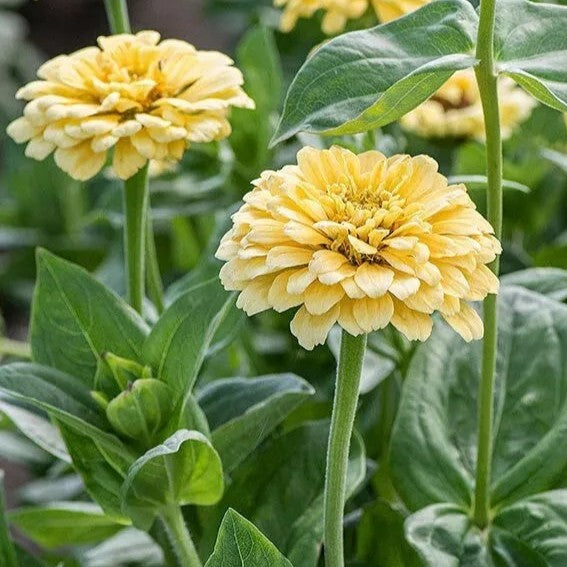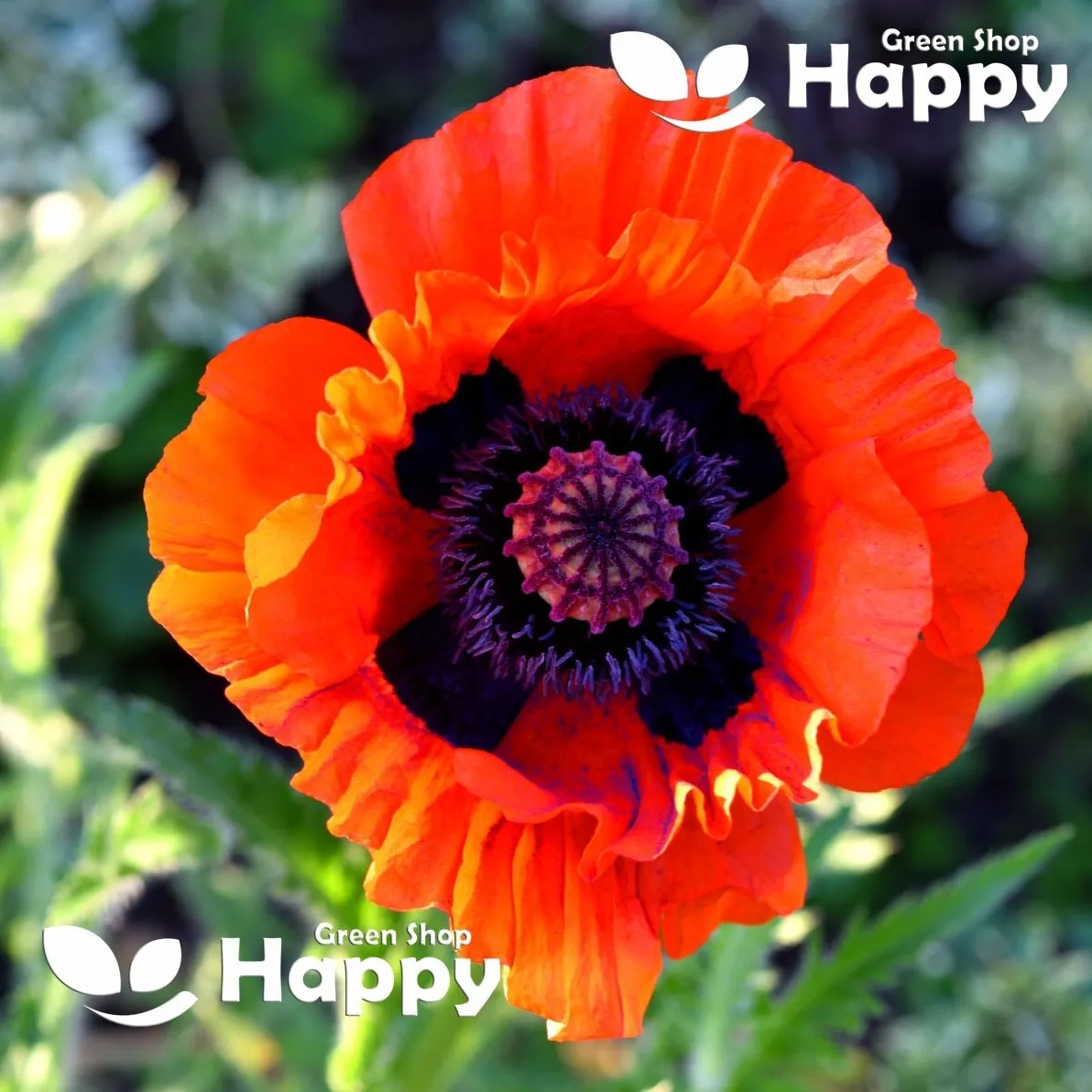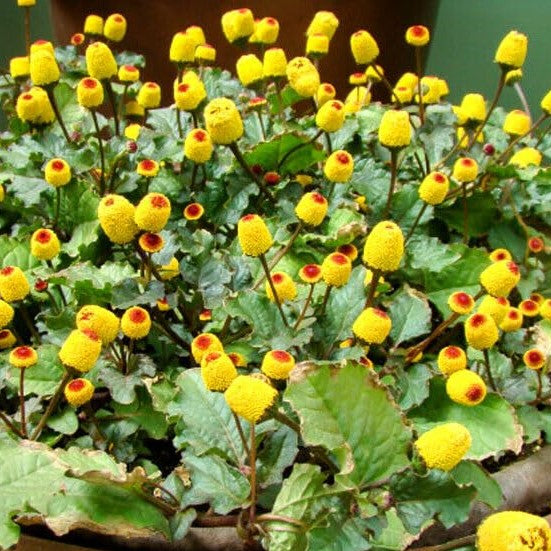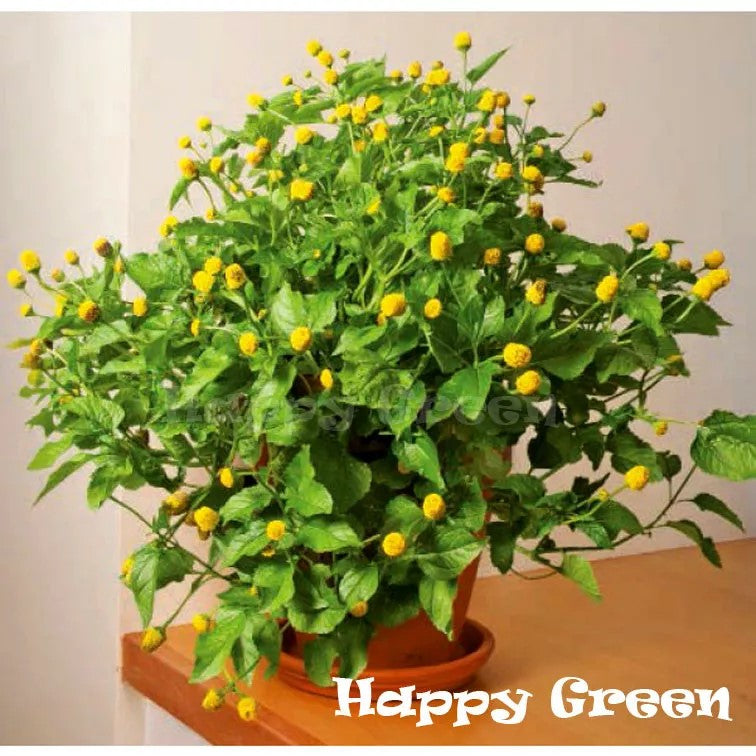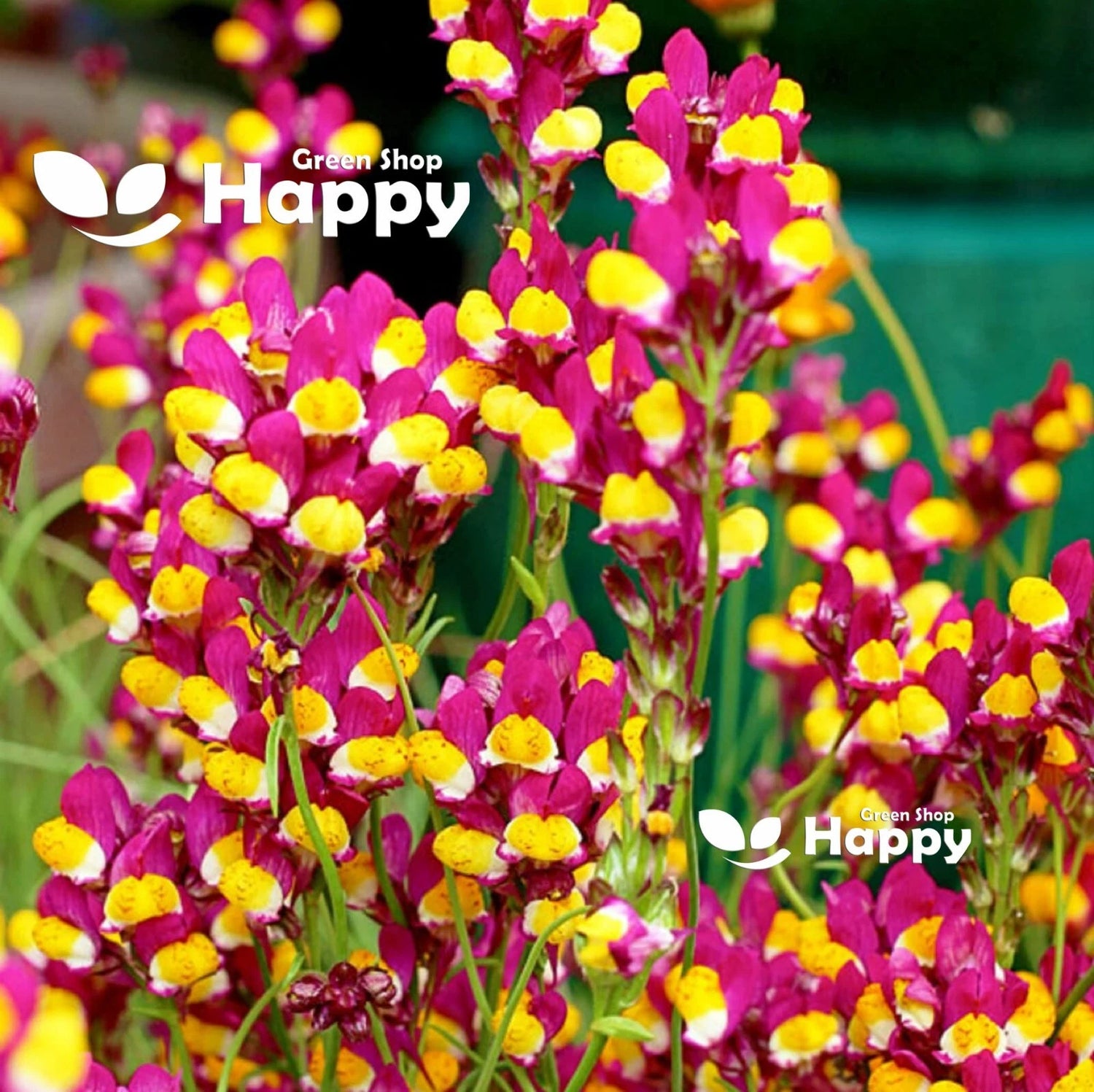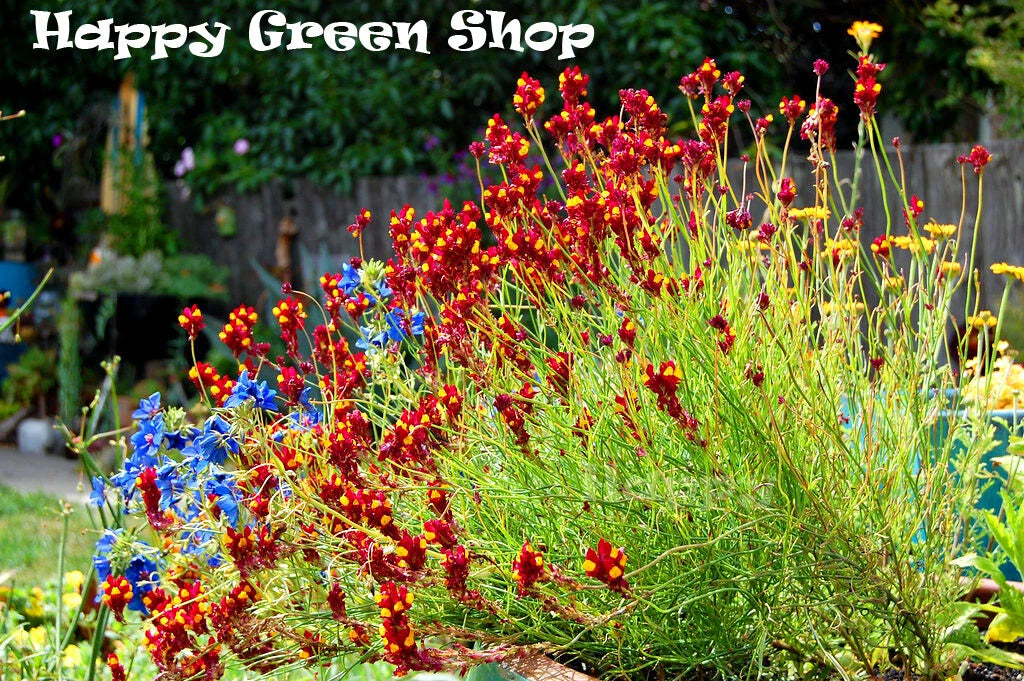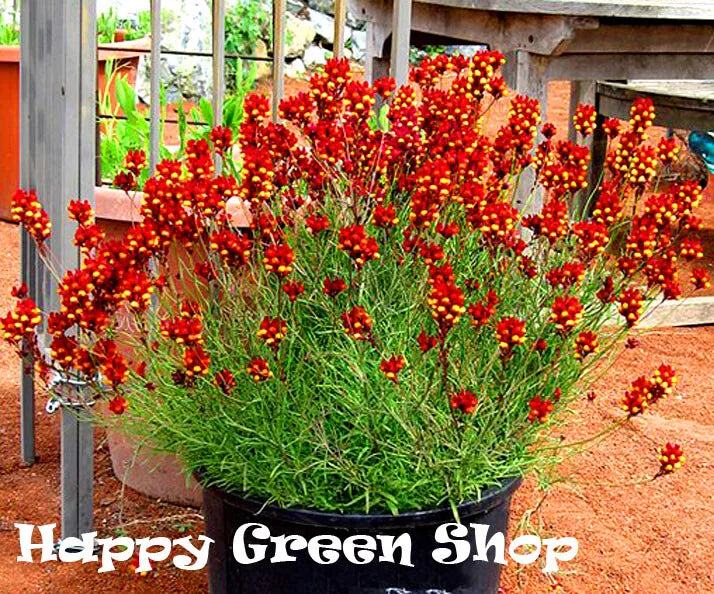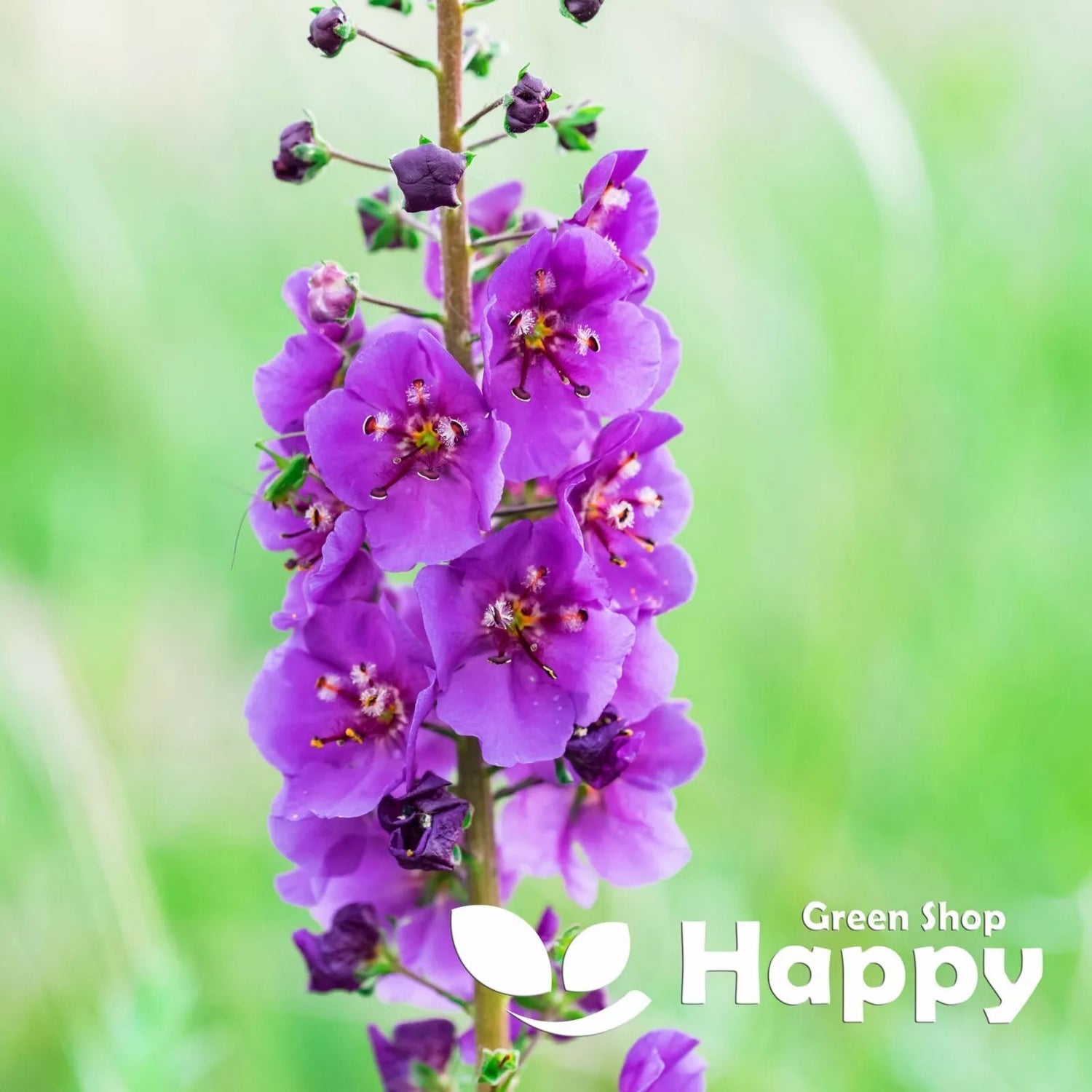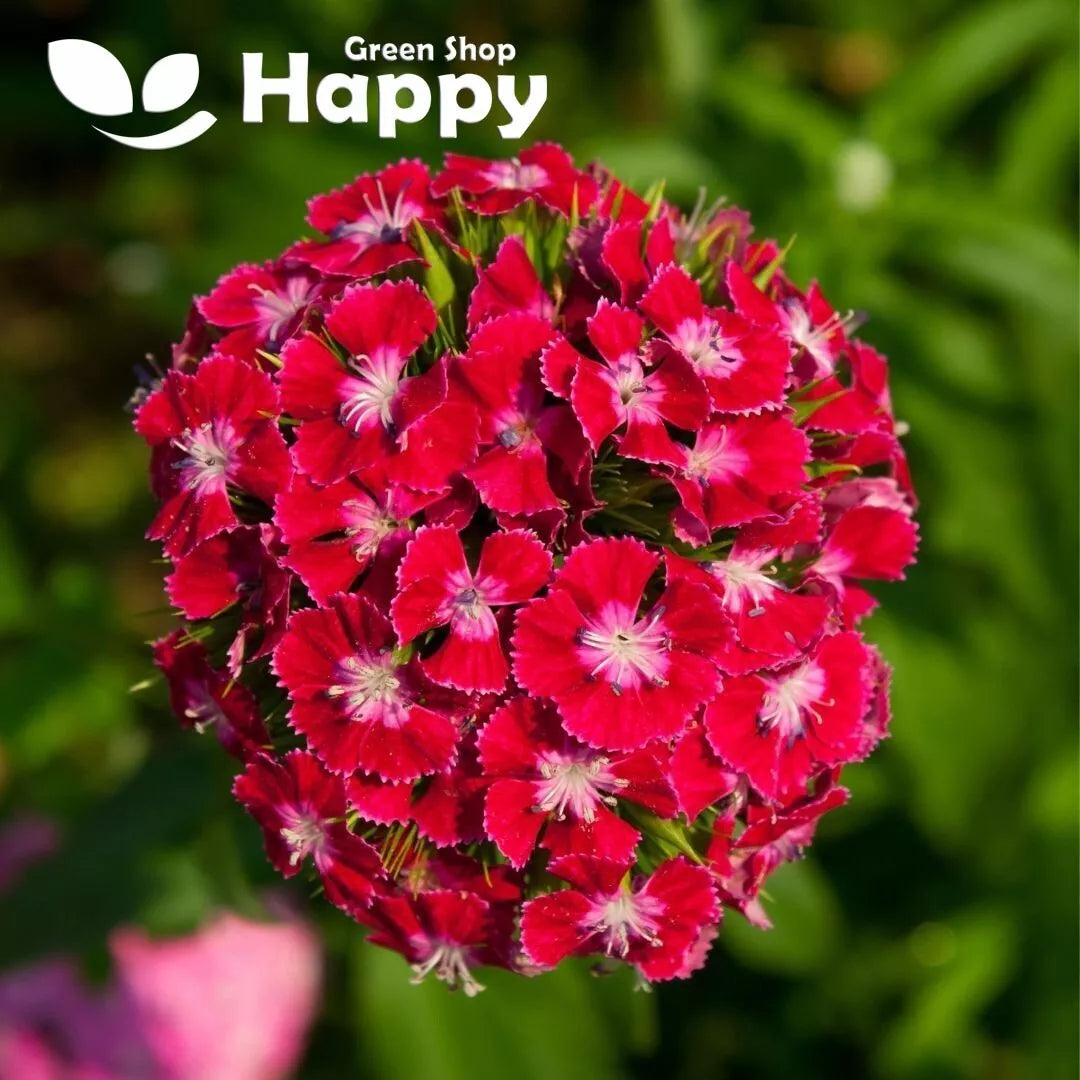Sort by:
326 products
326 products
Tulip Poppy Seeds (Papaver glaucum)
The Tulip Poppy (Papaver glaucum) is a striking annual with vibrant, cup-shaped flowers reminiscent of tulips. Available in shades of red, pink, and cream, these cheerful blooms bring a bold splash of color to borders, cottage gardens, and wildflower mixes. Ideal for naturalizing, cut flowers, or adding a classic poppy charm to your garden.
Why Grow Tulip Poppy
-
Unique tulip-shaped poppy blooms in vivid colors
-
Easy-to-grow, hardy annual
-
Great for borders, meadows, and cut flowers
Key Features
-
Botanical name: Papaver glaucum
-
Type: Hardy annual
-
Height: 40–60 cm
-
Spread: 20–30 cm
-
Flowering: Late spring–summer
-
Position: Full sun
-
Uses: Borders, cottage gardens, wildflower meadows, cut flowers
Sowing & Growing
-
Sow outdoors: March–May or September–October
-
Germination: 14–21 days at 15–20°C
-
Thin seedlings to 20–25 cm apart
-
Prefers full sun and well-drained soil
-
Deadhead for prolonged flowering or leave to self-seed
Toothache Plant ‘Bull’s Eye’ – Seeds
(Spilanthes acmella)
Toothache Plant ‘Bull’s Eye’ is a unique annual known for its small, bright yellow flower heads with a red center. Famous for its tingling, numbing effect on the mouth, it’s a fun and unusual addition to edible and medicinal gardens. Compact and easy to grow, it also attracts pollinators like bees and butterflies.
Why Grow Toothache Plant ‘Bull’s Eye’?
-
Bright yellow flowers with striking red centers
-
Unique tingling, numbing effect for culinary and medicinal use
-
Compact, easy-to-grow annual
-
Attracts bees and butterflies
Key Features
-
Type: Annual
-
Height: 25–40 cm
-
Flowers: Summer to autumn
-
Position: Full sun
-
Soil: Well-drained, fertile
Ideal For
-
Edible and medicinal gardens
-
Pollinator-friendly plantings
-
Containers and borders
-
Educational or novelty gardens
Sowing & Growing
-
Sow indoors: February–April in seed trays
-
Sow outdoors: April–May directly in prepared soil
-
Germination: 10–20 days at 20°C
-
Spacing: 20–25 cm apart
-
Care: Moderate watering; deadhead to encourage prolonged flowering
Toothache Plant – Seeds (Spilanthes oleracea)
The Toothache Plant (Spilanthes oleracea) is an unusual and fascinating herb, known for its small, bright red flowers and unique tingling effect when chewed. Traditionally used for its medicinal properties, it adds interest to herb gardens, containers, and edible landscaping. Easy to grow and fast-maturing, it’s a conversation-starting plant that also attracts pollinators.
Why Grow "Toothache Plant"
-
Bright red, cone-shaped flowers
-
Unique tingling sensation when chewed
-
Traditional medicinal and culinary uses
-
Attracts bees and other pollinators
Key Features
-
Type: Annual herb (Spilanthes oleracea)
-
Height: 30–60 cm
-
Flowering: Summer
-
Position: Full sun, well-drained soil
-
Uses: Herb gardens, containers, edible landscaping, pollinator-friendly plantings
Ideal For
-
Herb and medicinal gardens
-
Container and patio planting
-
Pollinator-friendly gardens
-
Educational or conversation-starting gardens
Sowing & Growing
-
Sow indoors: February–April in seed trays
-
Sow outdoors: April–May after frost
-
Germination: 10–20 days at 18–22°C
-
Transplant seedlings 25–30 cm apart
-
Prefers full sun and moderately fertile soil
-
Keep soil moist for best growth
Toadflax - Baby Snapdragon 'Spanish Dancer' - 10 000 seeds (Linaria reticulata cordoba)
£1.15
Unit price perToadflax - Baby Snapdragon 'Spanish Dancer' - 10 000 seeds (Linaria reticulata cordoba)
£1.15
Unit price perToadflax ‘Spanish Dancer’ – Seeds
(Linaria reticulata ‘Cordoba’)
Toadflax ‘Spanish Dancer’ is a charming annual known for its delicate, snapdragon-like flowers in soft shades of pink and lavender. Compact and bushy, it creates a carpet of colorful blooms ideal for borders, rockeries, and containers. Long-flowering and low-maintenance, it’s perfect for adding a graceful, cottage-garden touch.
Why Grow Toadflax ‘Spanish Dancer’?
-
Delicate snapdragon-like blooms in pink and lavender
-
Compact, bushy, and long-flowering annual
-
Excellent for borders, rockeries, and containers
-
Attracts bees and butterflies
Key Features
-
Type: Annual
-
Height: 20–30 cm
-
Flowers: Late spring to summer
-
Position: Full sun
-
Soil: Well-drained, moderately fertile
Ideal For
-
Cottage garden borders and beds
-
Rockeries and containers
-
Pollinator-friendly gardens
-
Low-maintenance ornamental planting
Sowing & Growing
-
Sow indoors: February–April in seed trays
-
Sow outdoors: April–May directly in prepared soil
-
Germination: 10–21 days at 15–20°C
-
Thin seedlings to 15–20 cm apart
-
Care: Water moderately and deadhead to prolong flowering
Thunbergia 'Sunrise' Mixed Seeds (Thunbergia alata)
Thunbergia 'Sunrise' is a vibrant climbing plant producing trumpet-shaped flowers in warm, sunrise-inspired colors. Its fast-growing vines and lush foliage make it perfect for trellises, fences, arches, and hanging baskets, adding tropical charm and color to any garden or patio.
What Makes It Special
-
Bright trumpet-shaped blooms in orange, yellow, and warm hues
-
Fast-growing climber with lush green foliage
-
Ideal for creating vertical displays and adding tropical flair
-
Perfect for containers, trellises, and pergolas
Key Features
-
Botanical name: Thunbergia alata
-
Common name: Thunbergia 'Sunrise' Mixed
-
Seed count: 35 seeds per pack
-
Height/Spread: 2–3 m tall, climbing habit
-
Position: Full sun to partial shade, well-drained soil
-
Flowering period: Summer to early autumn
-
Lifespan: Annual in temperate zones; perennial in frost-free areas
Ideal For
-
Trellises, fences, and arches
-
Hanging baskets and patio containers
-
Vertical gardens or pergolas
-
Adding bright, tropical color to any garden
Sowing Instructions
-
When to sow: March–May indoors or after last frost outdoors
-
How to sow:
-
Soak seeds for 12–24 hours before sowing to improve germination
-
Sow 0.5–1 cm deep in moist, well-drained soil
-
Keep soil warm and moist until seedlings appear (10–20 days)
-
-
Support: Provide trellis or climbing support as plants grow
-
Care: Regular watering and feeding encourage lush growth and abundant flowers
Temptress Flower Mixed Seeds (Verbascum phoeniceum)
A striking and colorful perennial, Temptress Flower Mixed produces tall spikes of vibrant blooms in shades of pink, purple, and white. Hardy and long-flowering, these plants attract pollinators and add architectural interest to borders, cottage gardens, and wildflower areas.
What Makes It Special
-
Eye-catching spikes of pink, purple, and white flowers
-
Hardy, long-lasting perennial with strong garden presence
-
Attracts bees and butterflies, supporting pollinator gardens
Key Features
-
Botanical name: Verbascum phoeniceum
-
Hardy perennial
-
Height: 60–120 cm (2–4 ft)
-
Bloom time: Mid-summer
Ideal For
-
Garden borders and cottage-style planting
-
Wildflower gardens and pollinator-friendly areas
-
Adding height and vertical interest to mixed plantings
Sowing
-
Sow indoors Feb–Apr or outdoors Mar–May
-
Cover lightly with soil and keep moist
-
Germination: 14–28 days at 18–20°C
-
Transplant seedlings 30–40 cm apart
-
Flowers the first or second year after sowing
Tall Snapdragon Mixed Seeds (Antirrhinum majus ‘Maximus’)
Tall Snapdragon Mixed is a classic garden favorite featuring spikes of vibrant, tubular flowers in a mix of colors. Its tall, upright growth makes it perfect for borders, beds, and cut flower arrangements. Loved for its long flowering season and striking vertical display, it brings charm and elegance to any garden.
What Makes It Special
-
Vibrant tubular flowers in assorted colors
-
Tall, upright growth ideal for dramatic borders and cut flowers
-
Long-flowering and easy to grow
-
Attracts pollinators such as bees and butterflies
Key Features
-
Botanical name: Antirrhinum majus ‘Maximus’
-
Variety: Mixed
-
Seed count: Approx. seeds per pack
-
Height/Spread: 60–90 cm tall, 20–30 cm spread
-
Position: Full sun; well-drained, fertile soil
-
Flowering period: June–September
Ideal For
-
Back borders and garden beds
-
Cut flower arrangements
-
Pollinator-friendly gardens
-
Adding vertical color and structure to summer gardens
Sowing Instructions
-
When to sow: February–April indoors; March–May outdoors
-
How to sow:
-
Sow seeds thinly on the surface of moist seed compost and press lightly
-
Germination occurs in 10–14 days at 18–20°C
-
-
Transplanting: Plant seedlings outdoors 20–25 cm apart after frost
-
Care: Water moderately; remove faded flowers to encourage continuous blooming
Sweet William Scarlet Seeds (Dianthus barbatus Red)
Sweet William Scarlet is a vibrant biennial flower renowned for its rich, scarlet-red flower clusters. With upright growth and densely packed blooms, it is perfect for borders, cottage gardens, and cut flower arrangements. This hardy biennial adds striking color and charm to any garden space.
What Makes It Special
-
Produces vivid scarlet-red flower clusters
-
Compact, upright growth ideal for borders and mixed beds
-
Excellent for cut flowers with long-lasting blooms
-
Biennial: reliable flowering in the second year
Key Features
-
Botanical name: Dianthus barbatus
-
Common name: Sweet William Scarlet
-
Seed count: Approx. seeds per pack
-
Height/Spread: 30–50 cm tall, 20–30 cm spread
-
Position: Full sun to partial shade, well-drained soil
-
Flowering period: Second year; late spring to early summer
-
Lifespan: Biennial
Ideal For
-
Borders, cottage-style gardens, and mixed flower beds
-
Cut flower arrangements
-
Pollinator-friendly gardens
-
Containers and patio planting
Sowing Instructions
-
When to sow:
-
Indoors: February–April for transplanting
-
Outdoors: April–May in well-prepared soil
-
-
How to sow:
-
Sow seeds thinly on the surface and press lightly into soil
-
Keep soil moist until germination (10–20 days)
-
-
Transplant/Thin: Space seedlings 20–30 cm apart
-
Care: Protect young plants from frost; deadhead spent flowers to prolong bloom
Sweet William ‘Pinocchio’ Mix – Seeds
(Dianthus barbatus) – Biennial/Short-lived Perennial
The Sweet William ‘Pinocchio’ Mix is a compact variety that produces charming clusters of vividly colored flowers in shades of red, pink, white, and bicolor. Its fragrant, long-lasting blooms make it a favorite for borders, rock gardens, and cut flowers. Compact in habit, it’s perfect for smaller spaces and containers while still bringing cottage-garden charm.
Key Features
-
Type: Biennial / short-lived perennial
-
Height: 25–30 cm
-
Blooming period: May–July (from second year)
-
Position: Full sun to partial shade
-
Soil: Well-drained, fertile soil
Ideal For
-
Borders and edging
-
Rock and cottage gardens
-
Containers and small gardens
-
Long-lasting cut flowers
Sowing & Growing
-
Sow indoors: February–April at 18–20°C
-
Sow outdoors: May–June for flowering the following year
-
Sowing depth: Surface sow, lightly cover with fine soil
-
Spacing: 15–20 cm apart
-
Care: Deadhead regularly; mulch in winter for protection
Showing 27/326




